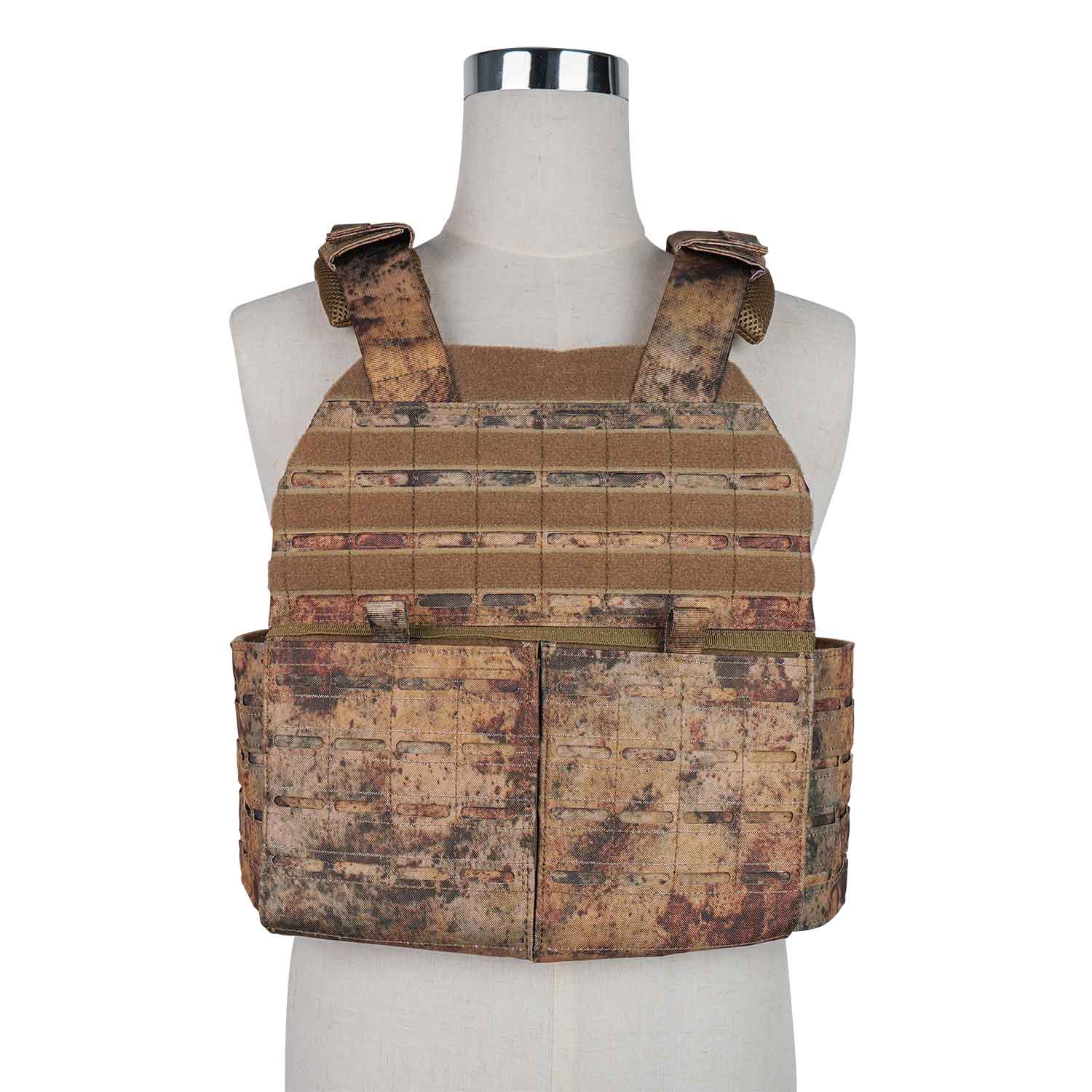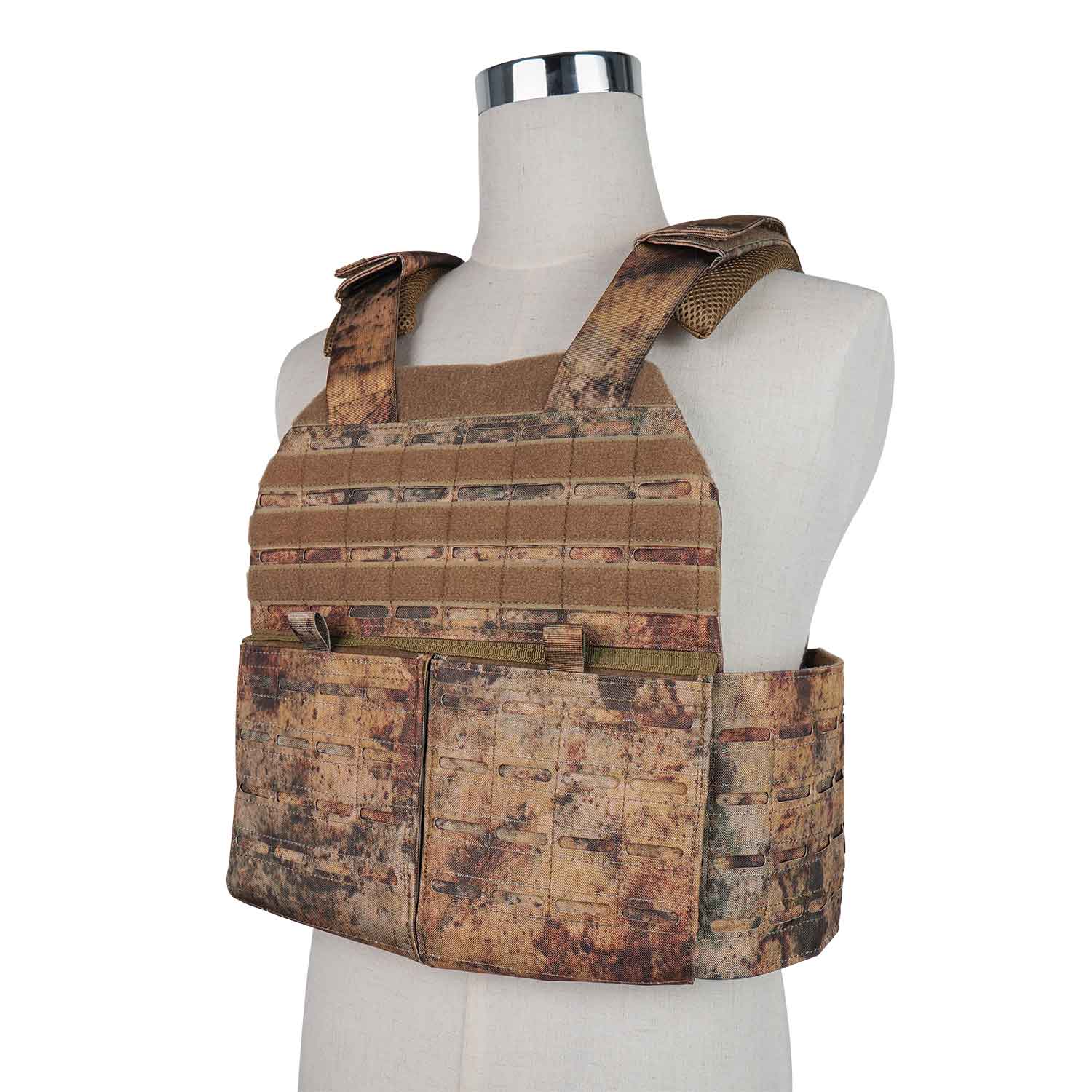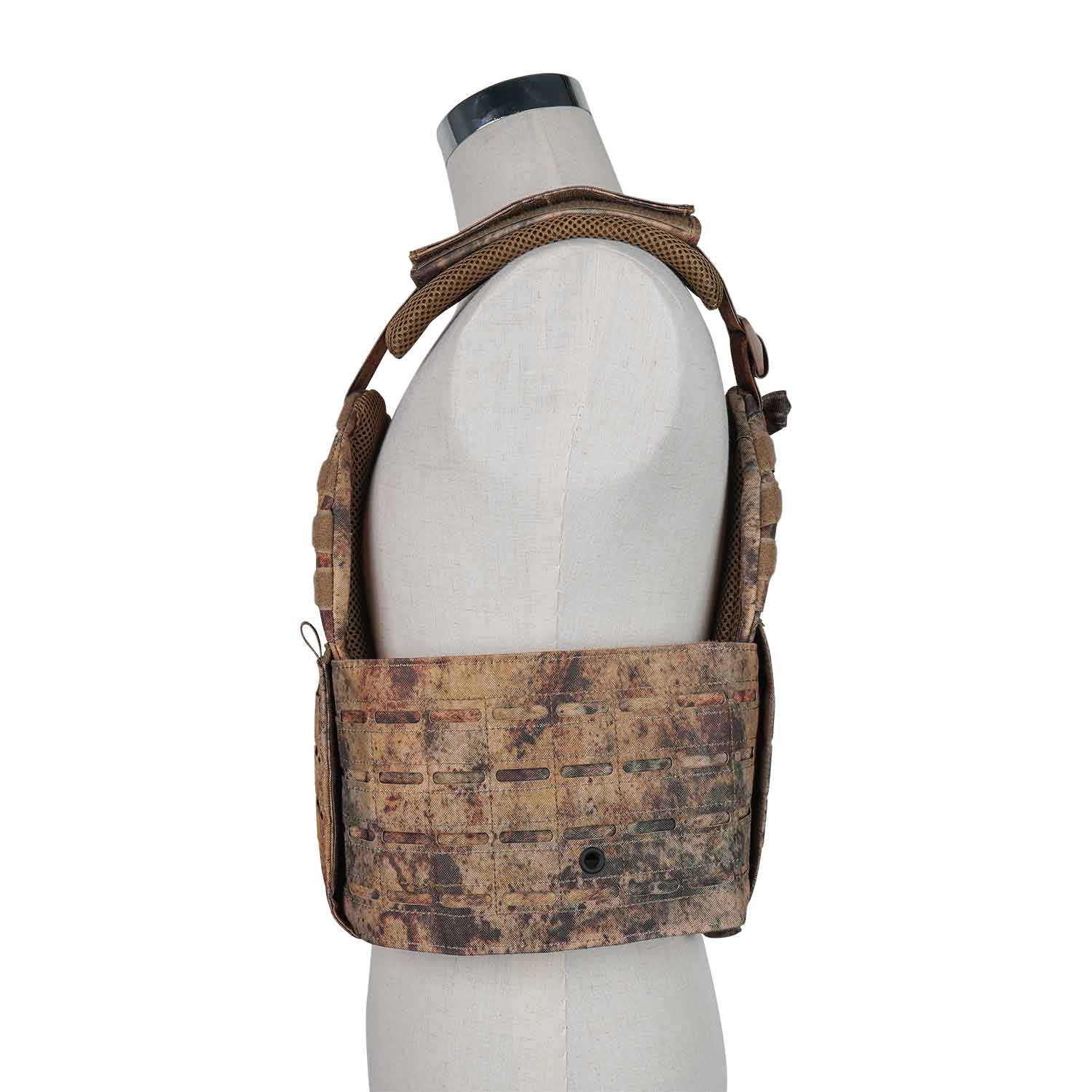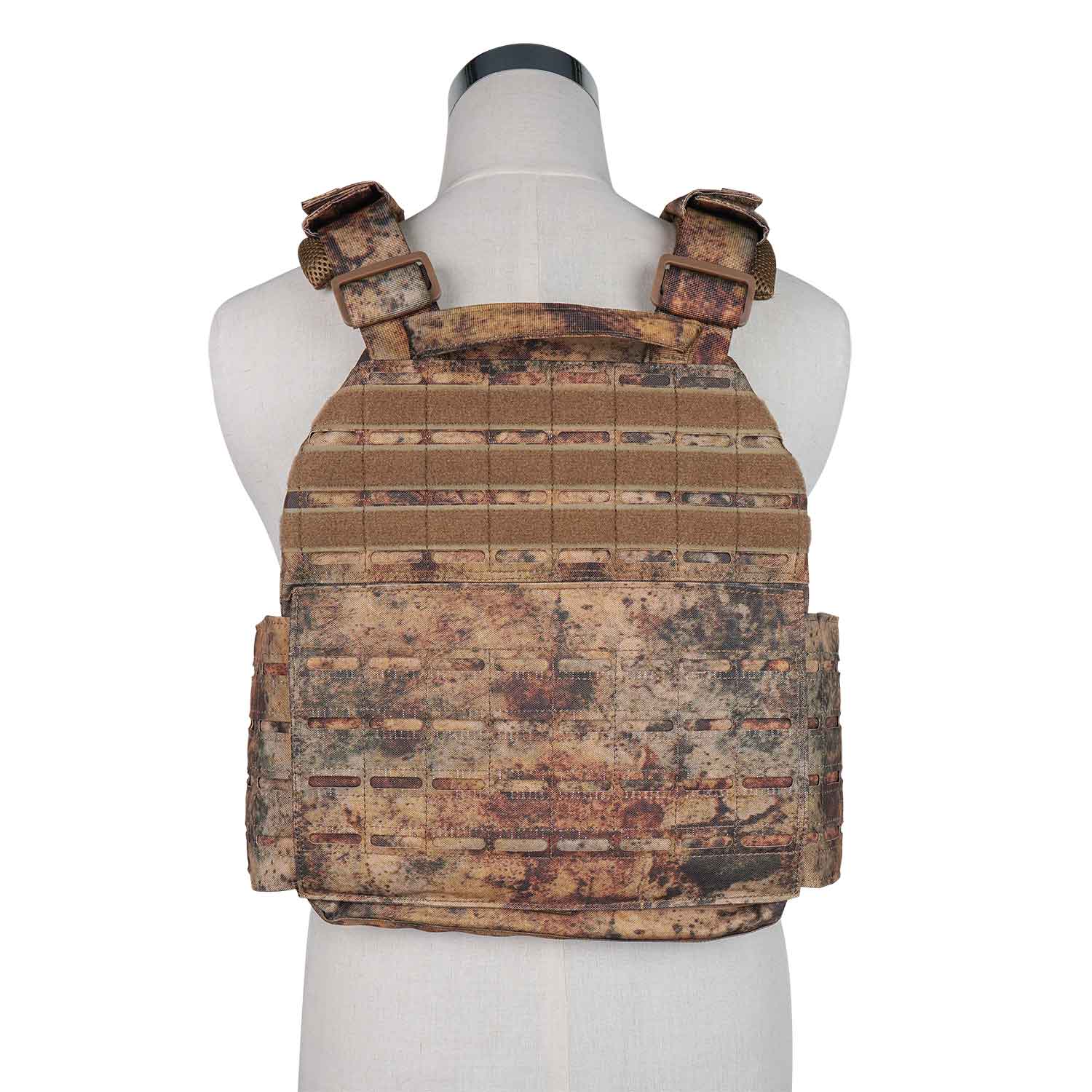Tactical body armor is an essential line of defense in high-risk environments, providing ballistic protection to those who serve in the military, law enforcement, and security sectors. These vests are designed to offer greater protection against a range of threats, including gunfire and explosive shrapnel, safeguarding the wearer during combat or tactical situations.
Understanding the critical role it plays, tactical body armor is engineered to meet rigorous safety standards, ensuring that it can withstand the intense demands of the field. Users rely on this equipment to increase their chances of survival and success in dangerous operations. In this post, we’ll discuss the main features of tactical body armor, and learn how it compares with concealable body armor. Let’s dive in!
What Is Tactical Body Armor?
Tactical body armor refers to the protective clothing specifically designed to absorb and dissipate the energy from firearm projectiles and shrapnel from explosions. It incorporates ballistic protection to shield the wearer’s vital organs and reduce the likelihood of fatal injuries. This form of armor is a critical component of the gear used by military and law enforcement personnel.
Designed for greater protection, tactical body armor often includes thicker and more robust materials than standard protective vests. It provides a balance between the necessary defense against threats and the mobility required for tactical maneuvers in the field.

Types of Tactical Body Armors
Various types of tactical body armor cater to different operational needs, with options ranging from plate carriers, which are designed to stop rifle rounds, to tactical vests and ballistic helmets that offer protection in high-risk situations. Made from lightweight materials like Kevlar, these armors are capable of defending against bullets or shrapnel, providing the wearer with vital protection.
Plate Carriers
Plate carriers are a type of tactical body armor that provides superior protection by incorporating body armor plates to shield against high-caliber ammunition. These carriers are favored by security professionals and military personnel for their ability to withstand multiple impacts while still offering mobility. Equipped with a MOLLE system, they enable the efficient attachment of additional gear and supplies.
The design of plate carriers is focused on safeguarding vital areas without compromising the wearer’s agility. They are an integral part of a tactical loadout, ensuring that individuals facing dangerous threats have the necessary protection to perform their duties effectively.
Tactical Vests
Tactical vests are engineered to offer IIIA ballistic protection, shielding the wearer from the impact of bullets and sharp objects. These vests are an essential tool in ensuring safety, providing IIIA protection, which is capable of stopping most handgun rounds. The strategic design of these vests allows for quick response and agility in unpredictable situations.
With a focus on comfort and functionality, tactical vests are versatile and can be utilized by various security forces. They are an integral part of a defense strategy, offering critical protection while allowing for quick movement and accessibility to gear.
Ballistic Helmets
In dangerous situations, ballistic helmets provide security guards and military personnel with dual protection. Designed to be lightweight and flexible, these helmets incorporate ballistic panels that can withstand multiple hits, offering reliable protection against ballistic threats. The armor panels are shaped to conform to the wearer’s body, ensuring comfort and superior protection.
Ace Link Armor ballistic helmets are crafted to offer the highest standard of defense while maintaining an ergonomic design. They are an essential component of ballistic vests, providing comprehensive coverage to the head and complementing the overall protective capabilities of tactical gear.
Protective Site
The protective site of tactical body armor is of paramount importance, encompassing both front and back coverage to safeguard against rifle rounds. Wearing body armor with extensive coverage ensures that the vital areas of the torso are shielded, providing body armor protection that can mean the difference between life and death in active scenarios.
Strategically placed armor within the vest intercepts incoming threats, distributing the force and minimizing injury. By covering the front and back, tactical vests offer comprehensive security, enabling wearers to face hostile environments with confidence.
Anti-Wound Pad
An anti-wound pad, typically made of Polycarbonate (PC) or high-density foam, is an integral component of tactical body armor. It works to absorb and distribute the force of an impact, reducing trauma and preventing penetrating injuries. The inclusion of such pads significantly enhances the vest’s protective capabilities.
These pads are engineered to complement the armor’s ballistic resistance, offering an additional layer of defense. Their placement is critical in mitigating the effects of forceful impacts and ensuring the wearer’s safety in the event of a direct hit.
Carrier Size
The carrier size of tactical body armor is customizable to fit various body types, ensuring that the protective gear is securely in place during operations. The ability to adjust the carrier to the wearer’s dimensions is crucial for both comfort and effectiveness of protection.
Utilizing a MOLLE system, carriers can accommodate different sizes and shapes of body armor plates, allowing for a tailored fit that maximizes mobility and defensive capabilities. This customization is a vital feature of tactical body armor, as it ensures the vest functions as intended under diverse conditions.
Bulletproof Material
The bulletproof material used in tactical body armor typically consists of multilayer polyethylene fiber, which offers an added layer of protection and reduces the risk of injury. Soft armor vests made from this material are known for their ability to protect the wearer from bullets, serving as a critical barrier when wearing these vests.
This advanced material contributes to the protective gear’s ability to fulfill its duties, ensuring that law enforcement agencies can maintain public safety. The utilization of bulletproof vests with adjustable straps and concealed under clothing options provides an essential service to those committed to upholding the law in the United States.

Tactical Body Armor Features
Tactical body armor is considered essential gear for individuals in high-stakes environments. Plate carriers and other forms of tactical body armor are engineered to withstand multiple hits, providing robust protection in the line of duty. These vests are a necessary component of a well-prepared tactical ensemble.
High Protection
Tactical body armor is synonymous with high protection, offering personal protection that is vital for military personnel and individuals in potentially hazardous situations. As an essential piece of equipment, tactical body armor ensures that one can navigate everyday situations with an additional degree of safety.
Developed with the highest standards of protection in mind, this gear is designed to absorb and neutralize threats, providing a substantial safeguard and peace of mind for the wearer. Whether in the line of duty or a precarious environment, tactical body armor stands as a bulwark against harm.
Suitable for Military
Tactical body armor is specifically tailored to meet the rigorous demands of military operations. Its design and construction are focused on providing soldiers with the protection they need to carry out their missions with confidence. The durability and adaptability of this armor make it an indispensable component of military equipment.
In addition to ballistic resistance, this type of armor is also equipped with features that enhance its utility on the battlefield, such as integrated hydration systems and load-bearing capabilities. Its robust construction ensures that military personnel are well-protected in a variety of combat scenarios.
Multiple Pockets
The inclusion of multiple pockets in tactical body armor vests plays a crucial role in functionality and preparedness. These pockets allow for the storage and quick access to essential items such as ammunition, communication devices, and medical supplies. The strategic placement of pockets ensures that gear is readily available without impeding mobility.
Designed for efficiency and convenience, the pockets are an integral part of the vest’s overall design. Their presence aids in the organization of equipment, allowing for a more streamlined and effective approach to tactical operations.
Compatibility for Accessories
Modern tactical body armor vests are designed with the wearer’s need for additional equipment in mind. These vests often feature a modular system that allows for the attachment of various accessories, including holsters, magazine pouches, and utility bags. This modular approach ensures that security guards can customize their loadout to meet the specific requirements of dangerous situations, ensuring that all essential gear is readily accessible.
The MOLLE (Modular Lightweight Load-carrying Equipment) system is a common feature in tactical vests, providing a reliable platform for attaching additional bulletproof accessories. This system enhances the functionality of the vest, allowing users to carry everything from communication devices to medical kits, thereby maximizing their operational efficiency and personal safety.
Ballistic Protection
Tactical body armor vests are designed to offer reliable protection against ballistic threats, utilizing ballistic panels made from advanced materials. These ballistic vests are typically equipped with armor panels that can withstand impacts from high-caliber rifle rounds or 9mm full metal jacket ammunition. Ace Link Armor, for instance, integrates lightweight and flexible materials to create ballistic panels that conform to the wearer’s body, providing dual protection without compromising mobility.
For security personnel operating in hostile situations, the level of ballistic protection is paramount. IIIA soft armor is a common choice for those needing protection from handgun rounds while maintaining maneuverability. Such vests ensure that the wearer is shielded from a wide range of ballistic threats, offering peace of mind and the ability to focus on the task at hand.
Body Coverage
The coverage area of tactical body armor is a critical factor in ensuring the wearer’s safety. Vests are designed to protect vital organs by covering the chest, back, and sometimes the sides of the wearer’s body. The extent of coverage is carefully balanced to provide optimal protection while allowing for freedom of movement, which is essential in responding effectively to threats.
Additional armor components, such as groin protectors, neck guards, and shoulder pads, can be added to some designs to extend the protected area. This modular approach allows for a customized fit and the option for enhanced protection in scenarios where the risk of injury to these areas is increased.
Quick Release Mechanism
A quick-release mechanism is a vital feature in tactical body armor, enabling the wearer to swiftly remove the vest in emergency situations or when quick medical access is required. This feature is particularly useful for military and law enforcement personnel who may need to adapt quickly to varying levels of threat or who need to reduce their load bearing in a safe environment.
These mechanisms are typically designed to be intuitive and can be activated with a single motion, even when under stress. The quick-release system ensures that the vest can be donned or doffed rapidly, providing an additional layer of safety for the user in volatile environments where every second counts.

Difference Between Tactical Body Armor And Concealable Body Armor
Tactical body armor and concealable body armor serve different purposes and offer varying levels of protection. Overt bulletproof vests, often used by military and law enforcement, are designed to provide maximum protection and are equipped with pockets and attachment points for tactical gear. They are made to be worn over clothing and can protect against high-velocity rounds and edged weapons. These vests are generally bulkier and may include additional features like spike protection and quick-release mechanisms.
Concealable body armor, on the other hand, is designed for discreet protection and is typically worn under clothing. This type of armor is lightweight and comfortable, making it favored by law enforcement officers who require personal protective equipment without drawing attention. Concealable vests often use flexible materials, like Kevlar vests, to provide a balance between protection and concealability. Although they offer a lower NIJ rating compared to their tactical counterparts, concealable armor is effective against handgun rounds and is comfortable to wear for extended periods.
When purchasing body armor, it is crucial to consider the specific needs of the user. Concealable body armor is suitable for security personnel kitted for covert operations or private citizens in need of personal safety measures. In contrast, tactical body armor offers a higher level of protection and is better suited for overt operations and situations where the threat level is higher. Both armor systems are essential tools for protection, and the choice between them should be based on the nature of the threats and the operational requirements of the user.

Wrap-Up!
In summary, tactical body armor vests offer enhanced protection and functionality for individuals operating in high-risk environments. They are equipped to handle the rigorous demands of military and law enforcement operations, providing not only ballistic protection but also the capability to carry necessary equipment. The integration of features such as compatibility for accessories and quick-release mechanisms further ensures these vests meet the dynamic needs of the user.
